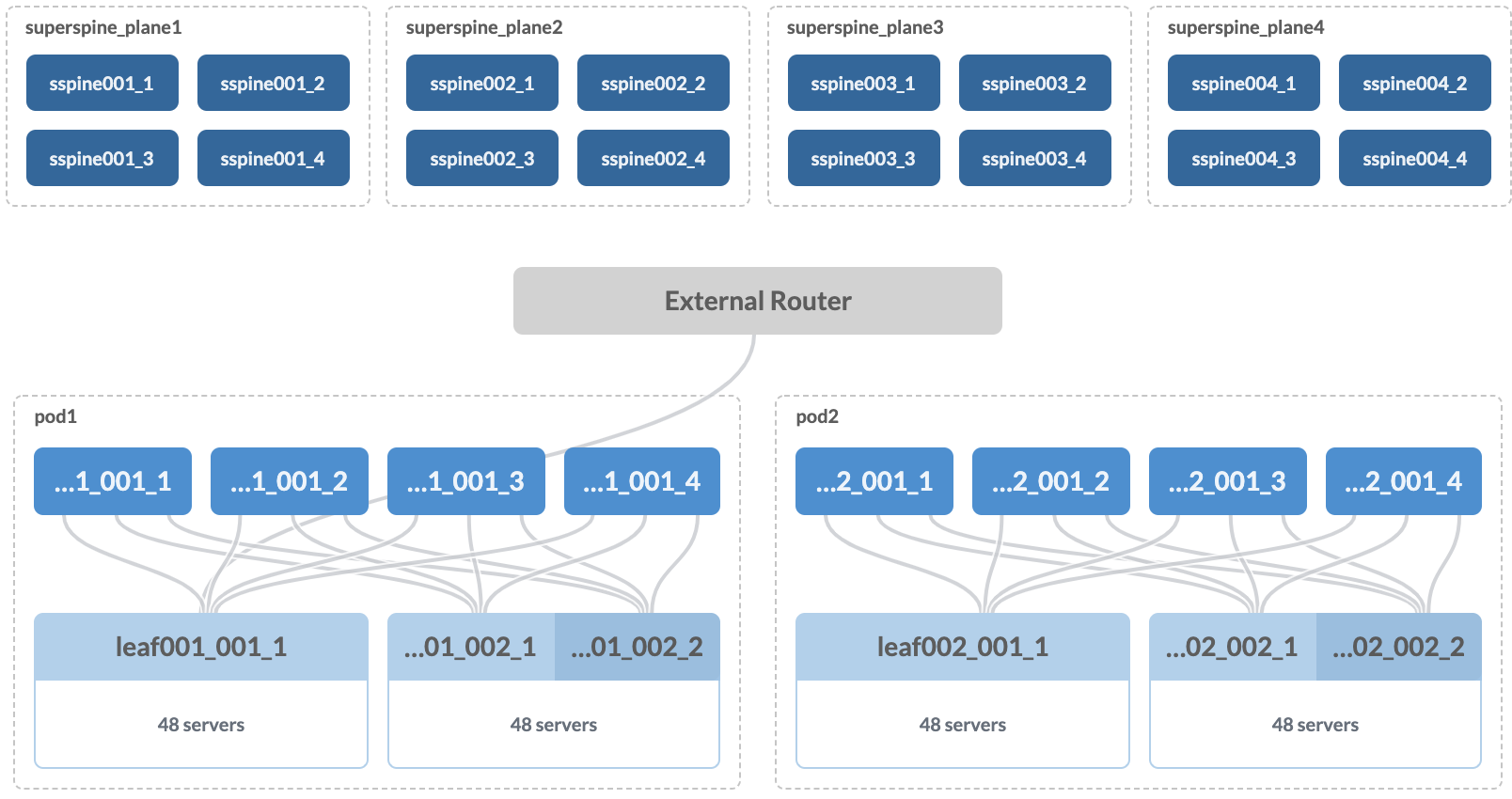5-Stage Clos Architecture
5-Stage Clos Overview
5-stage Clos architecture allows for large-scale topologies. With its additional
aggregation layer, you can interconnect multiple pods into a single fabric.
Superspine devices provide the additional layer that interconnects
multiple pods. Planes are groups of superspine devices. Each 5-stage topology
consists of one or more planes. Each plane consists of one or more superspine
devices. See below for an example.
Careful planning and consideration are required to build large 5-stage Clos networks. Refer to the limitations below when you're designing and validating your 5-stage topology. For assistance, contact Juniper Support.
5-Stage Clos Limitations
- You cannot change a 3-stage topology to a 5-stage topology.
- You must use the same overlay control protocol (static VXLAN or MP-EBGP-EVPN, specified during template creation) for all rack types in all pods.
- Root Cause Analysis is not supported.
- IPv6 / IPv4 support:
- IPv6 support in the underlay depends on the NOS. See the feature matrix.
- IPv6 applications are supported as of Apstra version 4.1.0.
-
IPv6 virtual networks are supported on EVPN blueprints as of Apstra version 4.1.1.
- The entire fabric across all pods must be either all IPv4, all IPv6 or all dual-stack
- Unsupported external connectivity implementations:
- One generic system connecting to multiple pods
- EVPN with external generic systems on superspine devices
- External generic systems on spine devices and leaf devices in the same pod
- Unsupported blueprint modifications:
- Add or remove superspine planes
5-Stage Clos and EVPN
Extending EVPN networks across multiple pods within the same blueprint adds the following value:
- Scaling: provide any-to-any connectivity for applications distributed across multiple pods.
- Redistributing Workloads: To load-balance applications, you can migrate a group of applications from one pod to another pod while preserving application IP and MAC addresses.
- Performing pod maintenance: Migrate all applications from one pod to another, while preserving the application IP and MAC addresses.
- Active / Standby applications across sites / pods: Deploy A/S applications across multiple pods to provide high availability at pod level, or as part of application migration tasks.
- Facilitate external connectivity for a virtual network from a remote pod without external connectivity.
5-stage Clos networks support the Junos QFX series of switches. You can use the ESI redundancy protocol, create templates from them, and then use those templates as pods in 5-stage Clos networks. For more information about working with Juniper devices with EVPN, see Juniper EVPN Support.
Just like in other Apstra-managed networks, required configuration is rendered to bring up multi-pod networks, and with proprietary Intent-based Networking technology the networks are validated to ensure they operate as designed.
The method for creating cross-pod virtual networks is the same method as for 3-stage networks.
